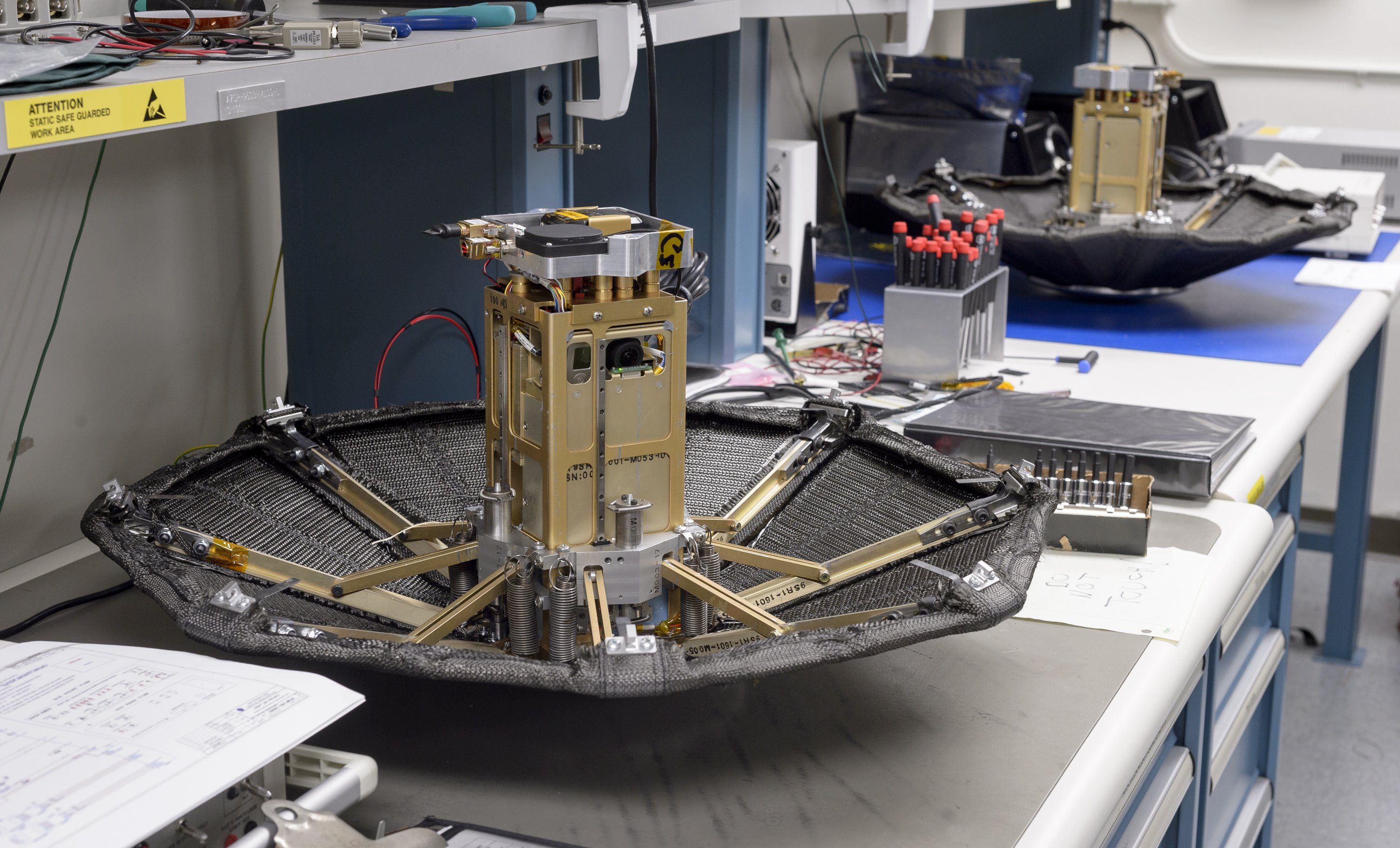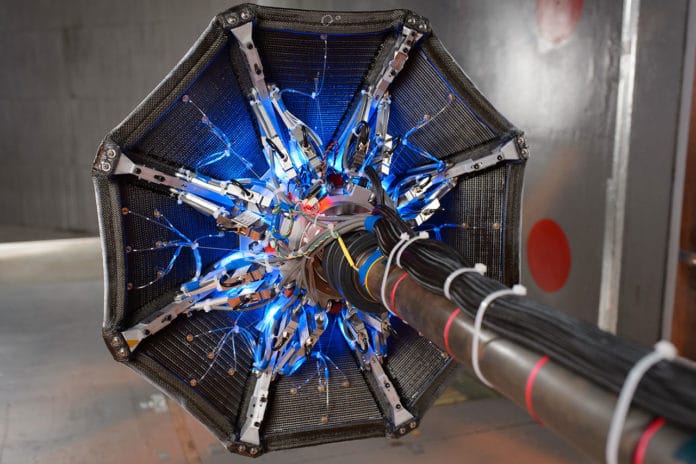Gearing up for its first flight test, NASA’s Adaptable Deployable Entry Placement Technology allows mission planners to develop an aeroshell design that fits within existing launch vehicle systems, and yet prior to the EDL mission segment, transforms into a low ballistic coefficient configuration.
ADEPT is a foldable device that opens to make a round, rigid heat shield, called an aeroshell. This game-changing technology could squeeze a heat shield into a rocket with a diameter larger than the rocket itself. The design may someday deliver much larger payloads to planetary surfaces than is currently possible.
According to scientists, ADEPT could be vital to future NASA missions that require additional huge aeroshells to secure shuttle destined to arrive on the surface of different planets, all without requiring bigger rockets.

Credits: Credits: NASA Ames Research Center/Dominic Hart
ADEPT’s first flight test is scheduled for Sept. 12 from Spaceport America in New Mexico aboard a UP Aerospace suborbital SpaceLoft rocket. ADEPT will launch in a stowed configuration, resembling a folded umbrella, and then separate from the rocket in space and unfold 60 miles above Earth.
The test will last about 15 minutes from launch to Earth return. The peak speed during the test is expected to be three times the speed of sound, about 2,300 miles per hour. That is not fast enough to generate significant heat during descent, but the purpose of the test is to observe the initial sequence of ADEPT’s deployment and assess aerodynamic stability while the heat shield enters Earth’s atmosphere and falls to the recovery site.
Paul Wercinski, ADEPT project manager at NASA’s Ames Research Center in California’s Silicon Valley said, “For a deployable like ADEPT, you can do ground-based testing, but ultimately, a flight test demonstrates end-to-end functionality – surviving launch environments, deploying in zero gravity and the vacuum of space, holding that rigid shape and then entering, in our case, Earth’s atmosphere.”
ADEPT uses flexible 3D woven carbon fabric skin stretched over deployable ribs and struts, which become rigid when fully flexed. The carbon fabric skin covers its structural surface, and serves as the primary component of the entry, descent and landing thermal protection system.
The next steps for ADEPT are to develop and conduct a test for an Earth entry at higher “orbital” speeds, roughly 17,000 miles per hour, to support maturing the technology with an eye towards Venus, Mars or Titan, and also returning lunar samples back to Earth.
